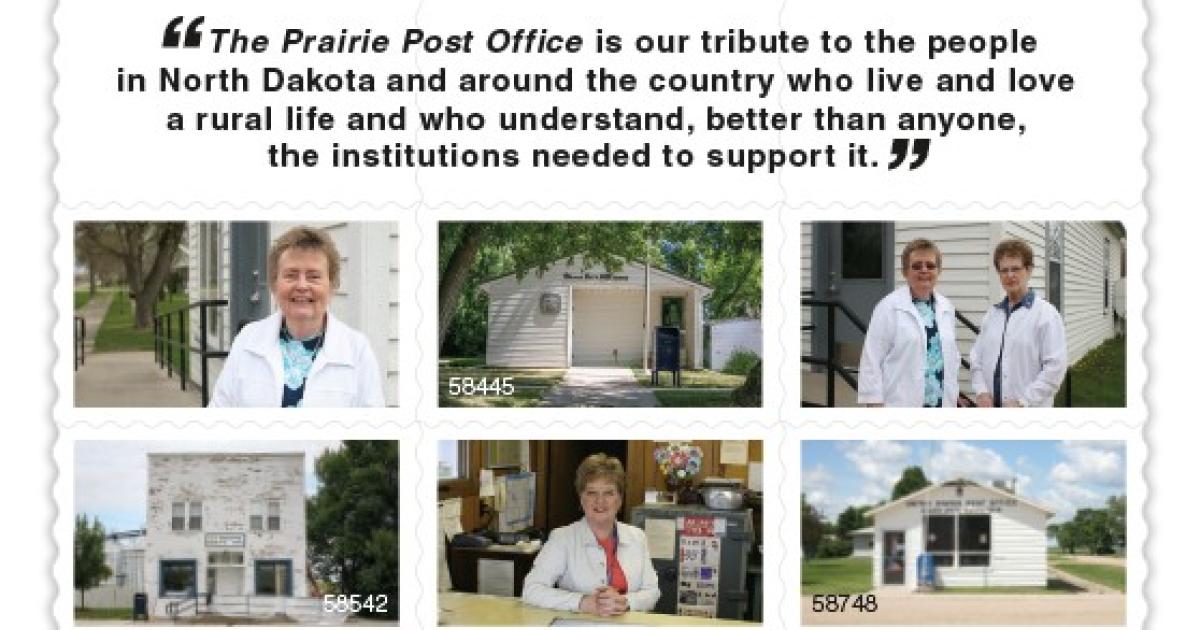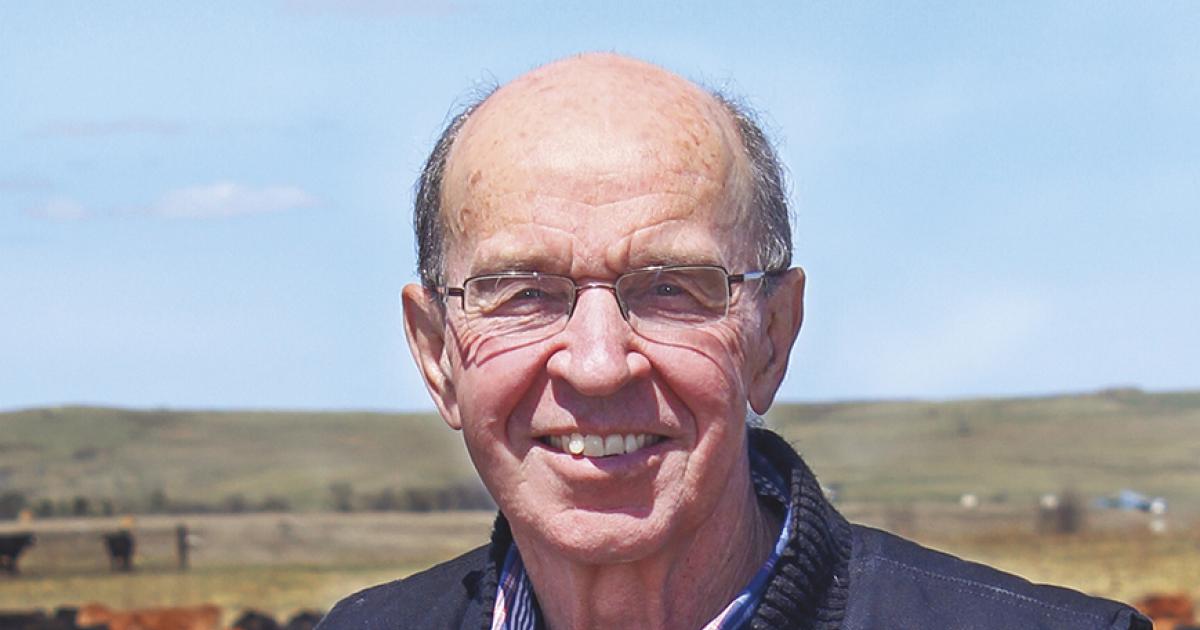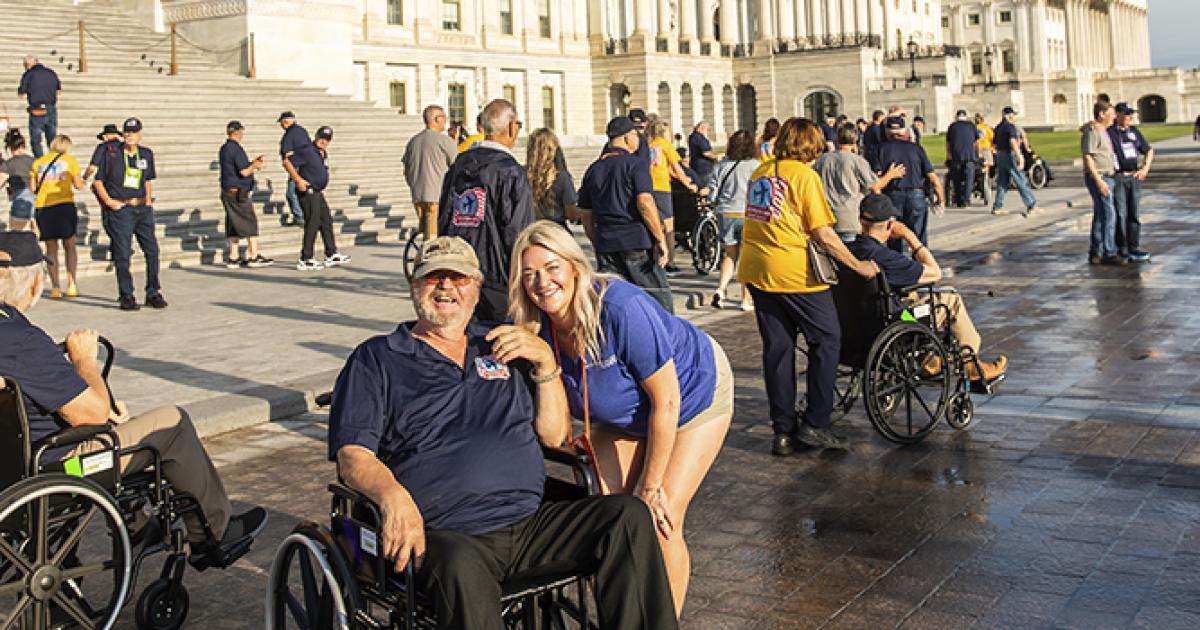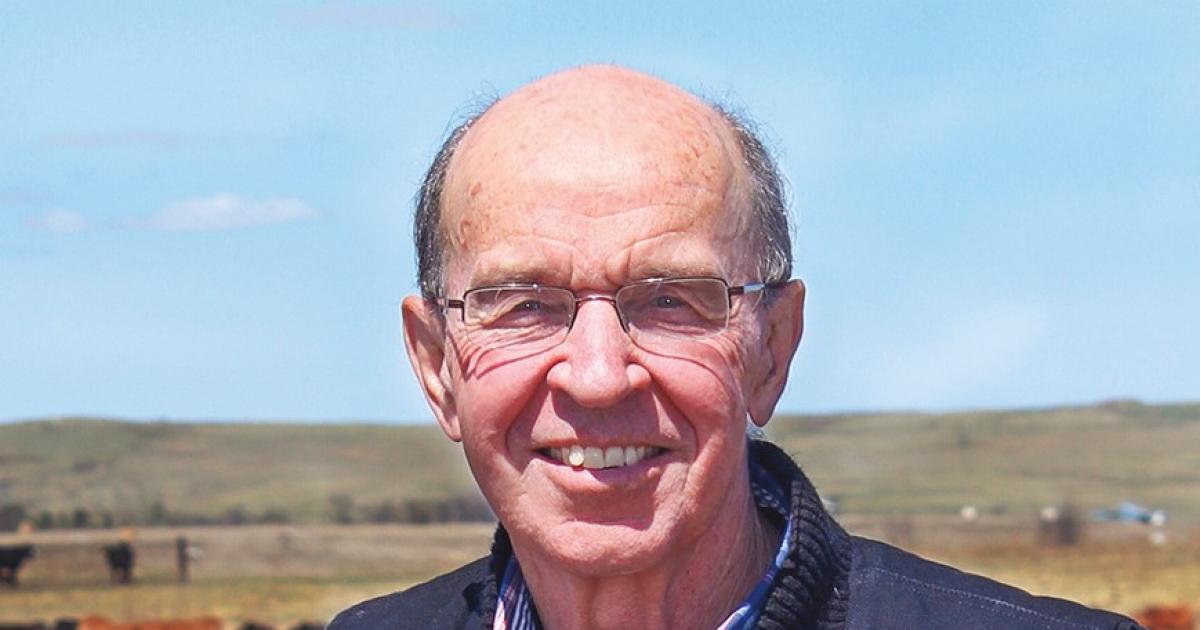PRAIRIE POST OFFICES CONNECT RURAL PAST TO PRESENT AND FUTURE
Photographer Wayne Gudmundson, left, and authors Steven Bolduc and K. Amy Phillips collaborated to produce the book, “The Prairie Post Office: Enlarging the Common Life in Rural North Dakota.”
A hollowed-out hole in an oak tree on the Missouri River. Lonely fur trading outposts. Military forts. An old sheepherder’s wagon. Humble sod homes. Homestead shanties. Isolated ranches. And a rock ledge on a butte. What do these things have in common? They all served as early post offices through present-day North Dakota.
A history of mail delivery in North Dakota, written by Kevin Carvell and published in a 2017 North Dakota State University (NDSU) Press book, “The Prairie Post Office: Enlarging the Common Life in Rural North Dakota,” offers a glimpse into the evolution of rural post offices.
“All told, North Dakota had almost two thousand post offices at one time or another,” Carvell writes. At the peak in 1900, there were 870 post offices. “As settlers from the final burst of homesteading almost immediately began to thin out and farms consolidated, prairie post offices started their decline.”
Today, some 295 post offices remain across North Dakota. In 2011, the USPS Retail Access Optimization Initiative sought to close 76 of these remaining North Dakota post offices. In all, the plan would have closed 36,000 post offices nationwide.
“Sadly, the savings from those cuts are meager when compared to the cost to our rural communities,” as explained in the forward of “The Prairie Post Office.”
What exactly is the impact, the “cost,” of losing post offices in North Dakota’s rural communities? K. Amy Phillips and Steven R. Bolduc were wondering the same thing when the news of post office closures reached North Dakota in 2011. And so, the pair of professors set out on a 10,000-mile journey (literally) in search of answers. Their research was enhanced by numerous conversations with North Dakota community members, retirees, postmasters and rural mail carriers and culminated in the writing of their book, “The Prairie Post Office: Enlarging the Common Life in Rural North Dakota.”
What they found, Bolduc describes, was “a curious devotion to the post office and communities.” Acting as a sort of lifeline, post offices were found to play six roles in rural communities in addition to mail delivery: time-honored public service, information and referral, social, economic, deliverer of basic necessities and symbolic.
Or as Bolduc simply says, the post office is “more than mail.”
AS IMPORTANT AS RURAL ELECTRIFICATION
Benjamin Franklin was appointed the first postmaster general of the United States in 1775. While mail delivery in the United States precedes Franklin’s appointment, stretching back to the colonial era, it was the European trapping industry that first brought mail to portions of what later became North Dakota.
“As the state moved out of its frontier era and into its period of European colonization and settlement, postal officials labored to get mail to a mushrooming population,” Carvell writes in “The Prairie Post Office.” “From just a couple thousand white settlers in the 1870s, the state had more than three hundred thousand by 1900 and almost six hundred thousand by 1910. Mail service expanded in a frenetic, rough and tumble, but still surprisingly effective fashion.”
At its most fundamental level, the function of the United States Postal Service (USPS) is “the obligation to provide postal services to bind the Nation together through the personal, educational, literary, and business correspondence of the people,” as stated in Title 39, Section 101 of the U.S. Code.
In rural areas, the USPS is often the final link in the delivery chain, responsible for “last-mile delivery” of packages for private parcel companies, like UPS and FedEx.
Bolduc likens rural mail delivery to rural electrification. Private industry had no interest in providing electricity to farms and ranches and shrunken rural populations, he says, so the people banded together to form electric cooperatives. When private enterprise falls short in mail delivery, USPS has a mandate and a vehicle to serve rural areas.
“Rural mail delivery is as important an institution to the development of rural United States as rural electrification,” Phillips and Bolduc say in their book.
BEYOND MAIL DELIVERY
Other than mail delivery, Phillips and Bolduc found themes “fairly quickly” in their conversations with North Dakotans about the role of the post office in their communities.
Time-honored public service
Service being the key word, and explicitly stated in Title 39 of U.S. Code:
“The Postal Service shall provide a maximum degree of effective and regular postal services to rural areas, communities, and small towns where post offices are not self-sustaining. No small post office shall be closed solely for operating at a deficit, it being the specific intent of the Congress that effective postal services be insured to residents of both urban and rural communities.
Information and referral
Rural post offices are the visual representation of the federal government in small towns. For many rural residents, the local post office or postmaster might be one’s only connection to the federal branch of government. Because of this, many post office employees provide information and referral, whether that be tracking down a phone number for another government agency or fielding questions from a new resident about the local power provider or maintaining a community bulletin board.
Social
Post offices may also function as a town center or meeting place. Phillips and Bolduc met a postmaster in Inkster who made coffee available for the morning crew and a retired postmaster in Almont who would use her own money to buy postal products for holiday giveaways. A conversation with the post office worker when retrieving the daily mail may be a senior’s only social interaction on a given day.
“Postal employees are functioning as social workers in a lot of ways,” Phillips says. “Going to the post office gets people out of their homes and provides social interaction. It speaks to the importance of keeping people active.”
A retired postmaster from Harvey, Art Prom says the post office may even serve as the “medical center” in a small town.
“If Ida didn’t come up this morning at 9:12, hey, somebody better check on her – she must be sick. And that’s what they do,” he says.
Economic
A physical post office location also supports the economic vitality of rural communities.
“Anything that draws people to the post office is potentially going to draw them to the café or the grocery store or some other business,” Phillips says.
The post office also becomes a catalyst for business, for the local plumber who needs parts or the attorney needing to send correspondence via registered mail.

Deliverer of basic necessities
Phillips and Bolduc met North Dakotans during their research who rely on USPS for the delivery of basic necessities, including medications, diapers for their children, beauty supplies for their at-home business or implement parts needed on the farm or ranch.
“The loss of a post office wouldn’t mean mail wouldn’t get delivered, for these folks,” Bolduc says. “It’s larger than that. You need ready access to the post office.”
Symbolic
For many who grew up in rural America, the post office is an iconic part of small-town life.
“Everybody’s got their post office story,” Phillips says. “There’s some connection to the post office.”
Losing post offices and losing ZIP codes contributes to a loss of community identity, Phillips and Bolduc say.
“The loss of (the post office) is another nail in the coffin to rural communities,” Bolduc says. “And it’s not just the existence of a community, but the connection to other communities and people.”
CONNECTING THEN TO NOW
Striking out on “The Prairie Post Office” project, Phillips and Bolduc had their own ideas of the importance of rural post offices. It was through their conversations with North Dakotans, however, that they came to truly understand the depth a post office brings to community life.
“Rural post offices and postal employees are not just vehicles for letter and package delivery – they are also dynamic representatives and reinforcements of the vitality and cohesion of a community,” Phillips and Bolduc write.
“The prairie post office not only stands as a tribute to the hard work and resolve that was needed to build rural towns, but also symbolizes a kind of bridge connecting rural residents’ past with their present and future,” they continue.
In following up on their research last summer, 10 of the 76 post offices on the 2011 USPS Retail Access Optimization Initiative closures list are no longer providing services. Only four of the 76 are standalone with their own postmaster. The rest have been transitioned to remotely managed post offices (RMPO), with reduced hours. Some are only open a select few hours each week.
“For individual communities, it’s a great, great loss,” Phillips says.
What’s next?
“It requires big thinking,” Bolduc says. “There’s nothing natural about the decline of rural. What’s happened to rural communities, it’s the result of policy decisions.”
As for their part, Phillips and Bolduc say there are opportunities for additional research and for others to pick up the torch.
“Ultimately, I hope this not just validates the role of the postal service, but reinforces the importance of them to decisionmakers and policymakers,” Phillips says. “Their continued existence is very important to the reality of rural life.”
Cally Peterson is editor of North Dakota Living. She can be reached at cpeterson@ndarec.com.
“The Prairie Post Office: Enlarging the Common Life in Rural North Dakota” is available through NDSU Press by calling 701-231-6848, emailing suzzanne.kelley@ndsu.edu or online at https://ndsupress.org/shop-now(link is external).
‘THE PRAIRIE POST OFFICE’ EXHIBIT
The State Historical Society of North Dakota has developed an exhibit based on the book “The Prairie Post Office: Enlarging the Common Life in Rural North Dakota” by K. Amy Phillips and Steven R. Bolduc, published by North Dakota State University Press in 2017. The exhibit explores the central role post offices play on main streets across North Dakota. It expands upon the book with additional content, including archival letters, historic images and objects from the State Museum collections, including a mail delivery wagon and postal uniform.
“The Prairie Post Office” exhibit is free and open to the public through 2021 in the N.D. Heritage Center’s James E. Sperry Gallery.











